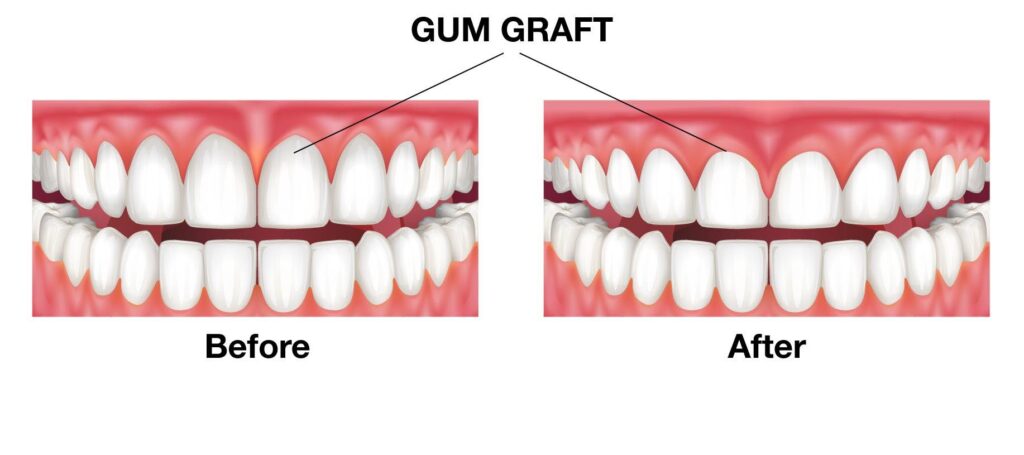What is periodontal surgery?
Sometimes, periodontal surgery may be needed to treat certain gum diseases and conditions, such as gingivitis or periodontitis. This type of surgery is commonly known as gum surgery.
The procedure aims to treat the gum disease and any damage it may have been caused by:
- regrowing damaged bones and tissues
- preventing tooth loss
- reducing gum gaps between teeth, known as black triangles
- reshaping the jaw hone to lower the risk for bacterial growth in bone crevices
- eliminating bacteria and infection

What conditions can gum surgery treat?
Gum diseases such as gingivitis and periodontitis may require surgical treatment.
Gingivitis is a mild form of gum disease that can cause gum redness, swelling, and bleeding. Most often, gingivitis occurs due to poor oral hygiene, plaque, and tartar buildup. Professional treatment can reverse the condition.
Types of Gum Surgery
1. Gingival Flap Surgery – If pockets are greater than 5 millimeters in depth, the periodontist would conduct this procedure to reduce the periodontal pockets that were noted in a patients chart. Most patients who have been diagnosed with moderate to severe periodontitis would go through this procedure. The periodontist would cut the gum tissue to separate the gum tissue from the teeth, conduct a thorough deep cleaning with an ultrasonic scaling device as well as hand instruments to remove tartar, plaque and biofilm below the pockets.


2. Gingivectomy – This procedure is conducted to remove excess gum tissue that may be overgrown on the teeth to provide a better area to clean the teeth. The periodontist would numb the patients gum tissue and cut and eliminate the extra gum tissue in the mouth.
3. Gingivoplasty – This type of gum surgery is used to reshape healthy gum tissue around the teeth to make them look better. If a person has tooth recession where the gum is pushed away from the tooth, a gingivoplasty can be done. A gum graft can be done where the tissue is taken from the roof of the mouth (this is called a graft) and then stitched into place on either side of the tooth that is recessed.

